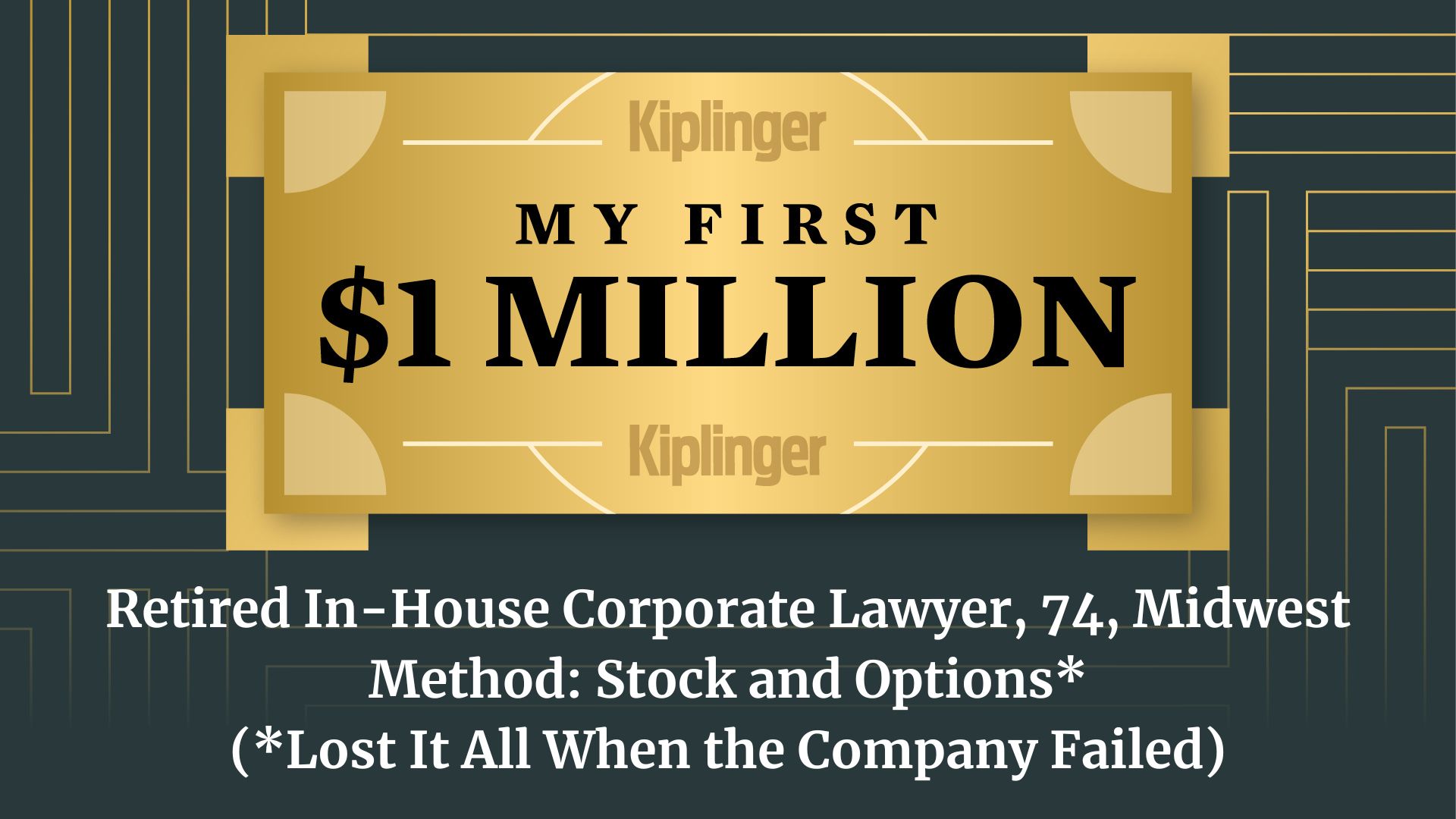Google Wallet Expands Digital ID Support Across More States and Services
From TSA checkpoints to online verification, we dive into Google Wallet's growing role in digital identification.

As digital wallets become more central to how we pay and verify our identities, Google Wallet has rolled out a new feature. The tech giant recently announced an expansion of its digital ID support to more states, including Arkansas, Montana, Puerto Rico and West Virginia.
This rollout allows residents of these areas to store a digital version of their state ID or even create a digital ID using a U.S. passport, making it easier to pass through TSA checkpoints or verify identity in various apps.
With privacy-focused technology like Zero Knowledge Proof, Google Wallet is reshaping how we think about digital identification — especially given the new REAL ID requirement for domestic air travel that went into effect May 7.
From just $107.88 $24.99 for Kiplinger Personal Finance
Become a smarter, better informed investor. Subscribe from just $107.88 $24.99, plus get up to 4 Special Issues

Sign up for Kiplinger’s Free Newsletters
Profit and prosper with the best of expert advice on investing, taxes, retirement, personal finance and more - straight to your e-mail.
Profit and prosper with the best of expert advice - straight to your e-mail.
How Google Wallet's digital ID works
Setting up a digital ID on Google Wallet is straightforward. Users upload their state ID or U.S. passport information through the app and follow a guided verification process.
Google ensures that all IDs are stored securely on the user’s device, not on external servers, protecting sensitive information from cyber threats.
One of the standout features is Google’s use of Zero Knowledge Proof technology, which allows users to verify their age or other identity credentials without exposing additional personal data.
For example, when proving you’re over 21, the app only shares a simple verification of age, not your full date of birth or ID number.
This privacy-first approach is designed to give users more control over their personal information while maintaining security.
Protect your family's credit with LifeLock, a trusted leader in identity theft protection. LifeLock monitors personal information and alerts subscribers to potential threats, including unauthorized credit applications.
Where can you use Google Wallet's Digital ID
TSA Checkpoints
The days of fumbling through your wallet for a physical ID at airport security may soon be behind you. Google Wallet’s digital ID is now accepted at select domestic TSA checkpoints, allowing for quicker, contactless verification.
This not only speeds up the process but also reduces the risk of losing physical documents during travel.
App and Online Verification
Beyond TSA checkpoints, Google Wallet's digital ID is making it easier to verify identity in apps and online platforms.
Imagine signing up for a new service or verifying your age on a platform without needing to snap a photo of your driver's license.
Google Wallet can do that with just a tap. This opens doors for more secure online transactions and streamlined app registrations.
How Google Wallet protects your digital ID
One of the biggest questions surrounding digital IDs is security. Google Wallet addresses these concerns with robust encryption and local storage. Your digital ID information is kept on your device, not in the cloud, which drastically reduces the risk of data breaches.
Even if your phone is lost or stolen, the data remains encrypted and inaccessible without your password or biometric verification.
The introduction of Zero Knowledge Proof further enhances security by only sharing the minimum amount of information needed for verification. Google’s approach is a promising step toward balancing convenience with privacy in the digital age.
Real ID requirement and its implications
Since a Real ID is now required for all air travel in the U.S., Google Wallet’s digital ID could be a secondary option to prove your identity especially if you ever forget or misplace your physical wallet or ID.
However, it shouldn’t be considered a complete replacement for your physical ID.
With more states now supporting digital IDs, this option becomes increasingly practical for everyday use and compliance with federal regulations.
Related Content
Profit and prosper with the best of Kiplinger's advice on investing, taxes, retirement, personal finance and much more. Delivered daily. Enter your email in the box and click Sign Me Up.

Choncé is a personal finance freelance writer who enjoys writing about eCommerce, savings, banking, credit cards, and insurance. Having a background in journalism, she decided to dive deep into the world of content writing in 2013 after noticing many publications transitioning to digital formats. She has more than 10 years of experience writing content and graduated from Northern Illinois University.
-
 4 Great Tools to DIY Your Own Financial Plan
4 Great Tools to DIY Your Own Financial PlanSmart Savings Several tools picked out by Kiplinger that DIYers can use to make their own financial plan.
-
 The 7-Month Deadline That Sets Your Lifetime Medicare Premiums
The 7-Month Deadline That Sets Your Lifetime Medicare PremiumsUnderstanding Medicare enrollment is crucial, as missing deadlines can lead to permanent late enrollment penalties and gaps in coverage.
-
 Retirees Living in Portugal: You Need a Post-NHR Tax Strategy
Retirees Living in Portugal: You Need a Post-NHR Tax StrategyWhen your 10-year Non-Habitual Resident tax break ends, you could see your tax rate soar. Take steps to plan for this change well before the NHR window closes.
-
 4 Great Tools to DIY Your Own Financial Plan
4 Great Tools to DIY Your Own Financial PlanSmart Savings Several tools picked out by Kiplinger that DIYers can use to make their own financial plan.
-
 The 7-Month Deadline That Determines Your Lifetime Medicare Premiums
The 7-Month Deadline That Determines Your Lifetime Medicare PremiumsUnderstanding Medicare enrollment is crucial, as missing deadlines can lead to permanent late enrollment penalties and gaps in coverage.
-
 Should You Renew Your CD?
Should You Renew Your CD?With rate cuts impacting earnings, we examine if now is a wise time to renew CDs.
-
 Where to Store Your Cash in 2026
Where to Store Your Cash in 2026Set yourself up for success with these strategies.
-
 What Makes This Business So Successful? We Find Out From the Founder's Kids
What Makes This Business So Successful? We Find Out From the Founder's KidsThe children of Morgan Clayton share how their father's wisdom, life experience and caring nature have turned their family business into a respected powerhouse.
-
 I'm a Financial Adviser: The Fed's Rate Cuts Could Have Impacts You Might Not Anticipate
I'm a Financial Adviser: The Fed's Rate Cuts Could Have Impacts You Might Not AnticipateUnderstanding how lower interest rates could impact your wallet can help you determine the right financial moves to make.
-
 My Teen Crashed His Car, and Now Our Insurance Has Tripled. What Now?
My Teen Crashed His Car, and Now Our Insurance Has Tripled. What Now?Dealing with the costly aftermath of a teen car accident is stressful. Here are your options for navigating it.
-
 My First $1 Million: Retired In-House Corporate Lawyer, 74, Midwest
My First $1 Million: Retired In-House Corporate Lawyer, 74, MidwestEver wonder how someone who's made a million dollars or more did it? Kiplinger's My First $1 Million series uncovers the answers.
